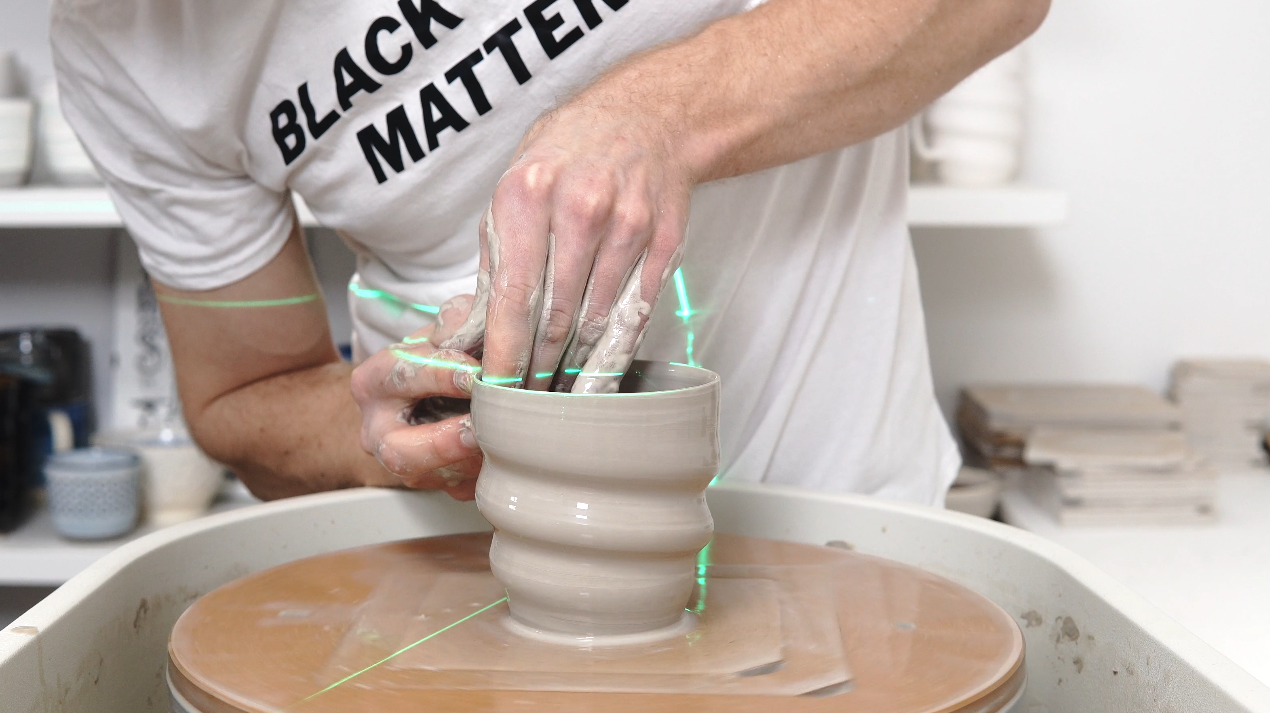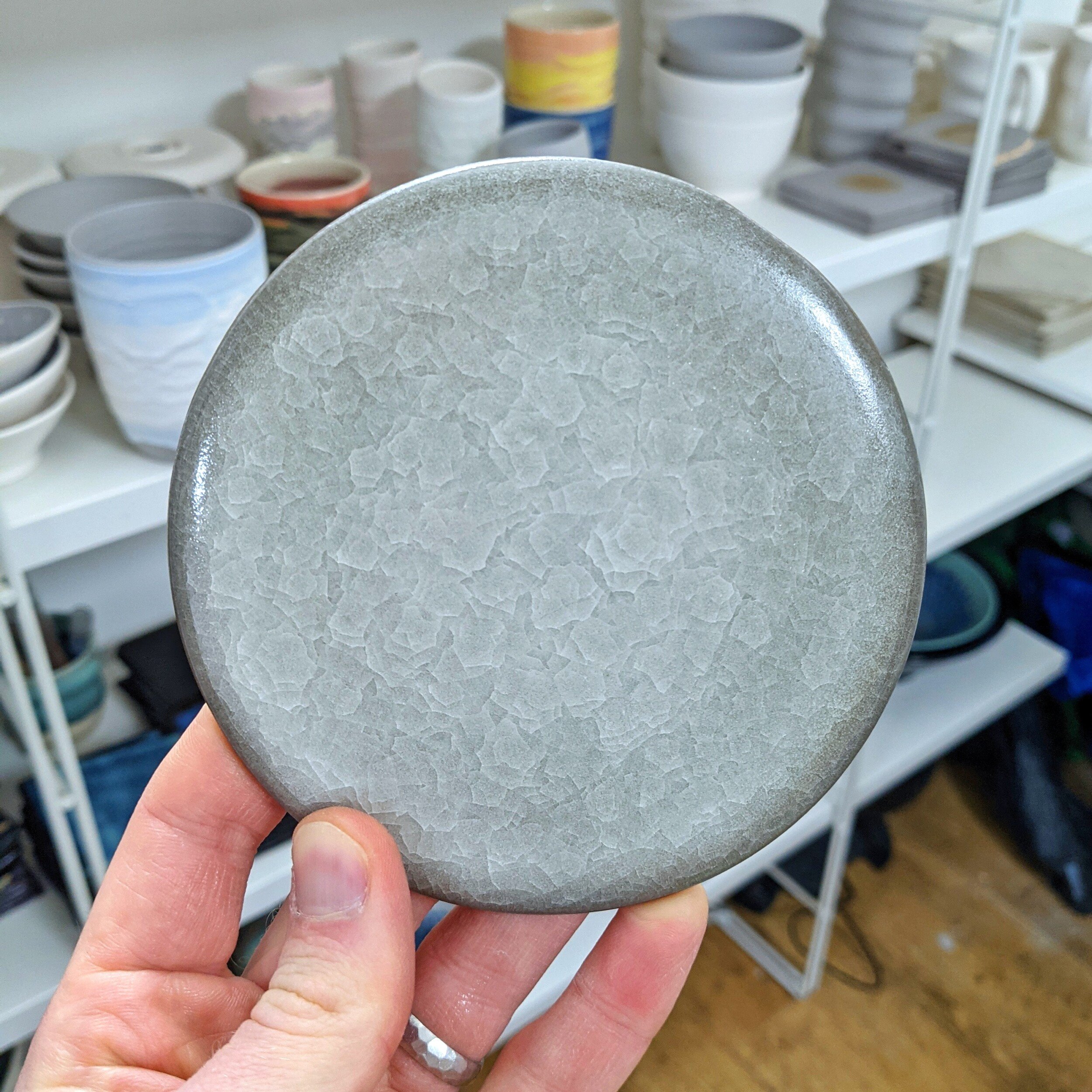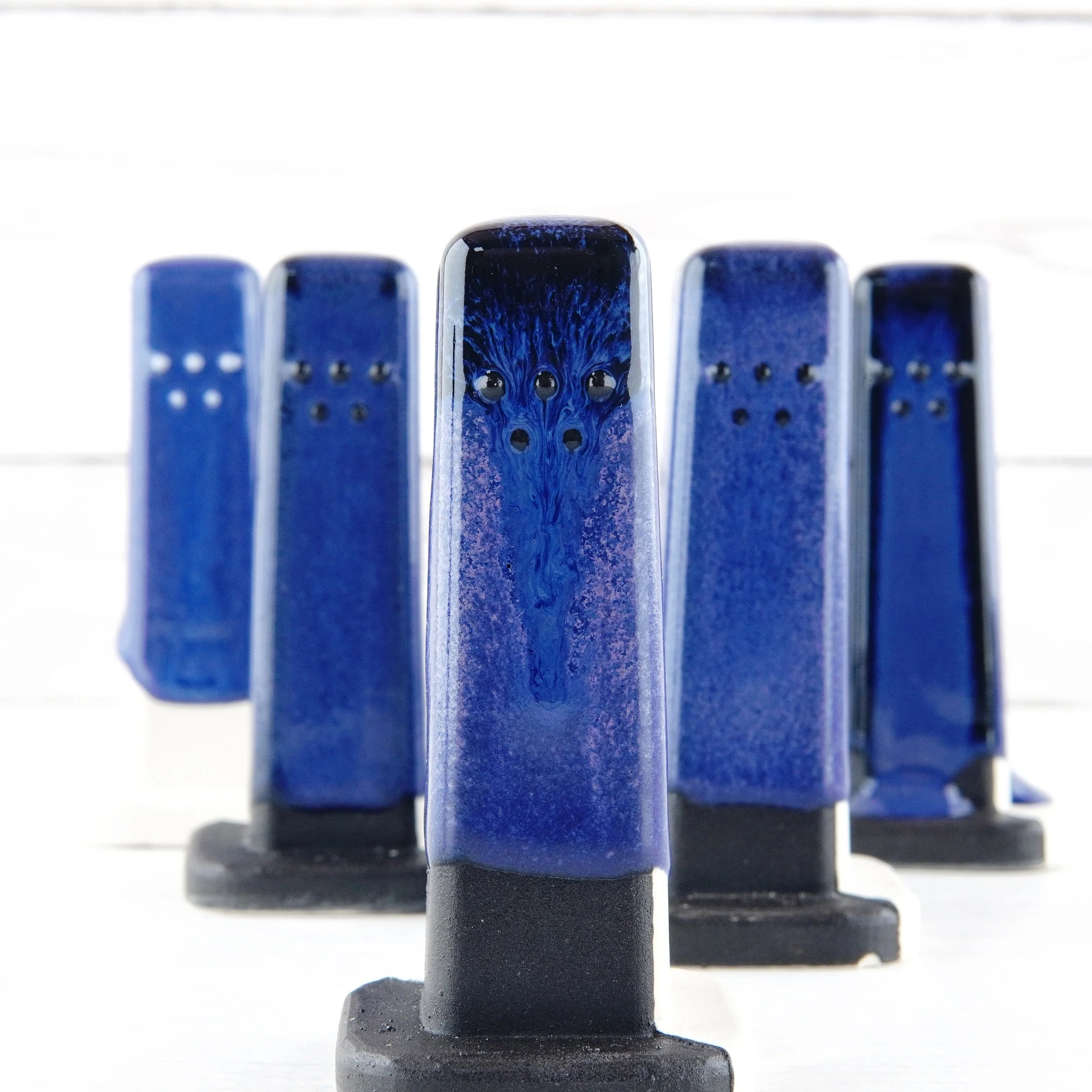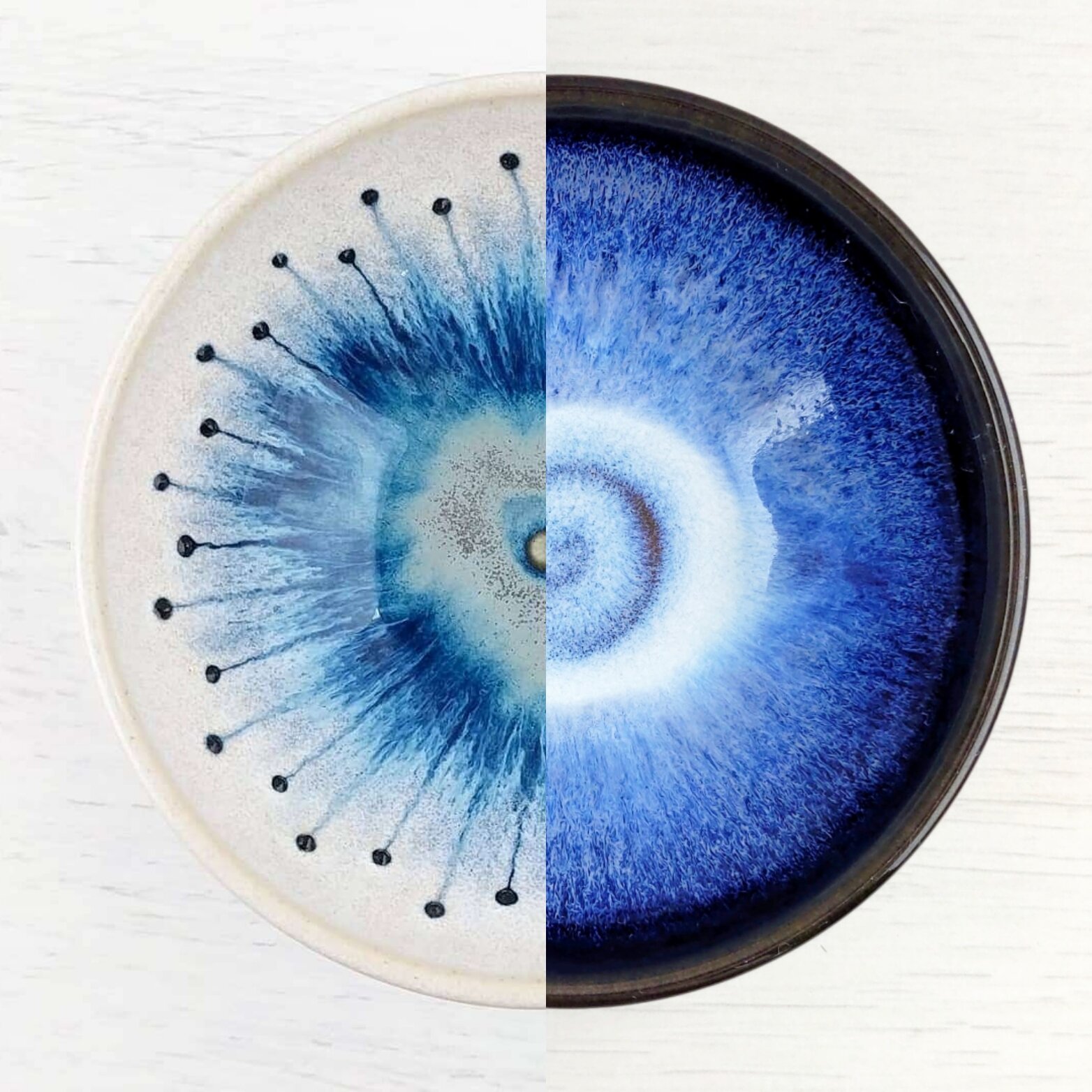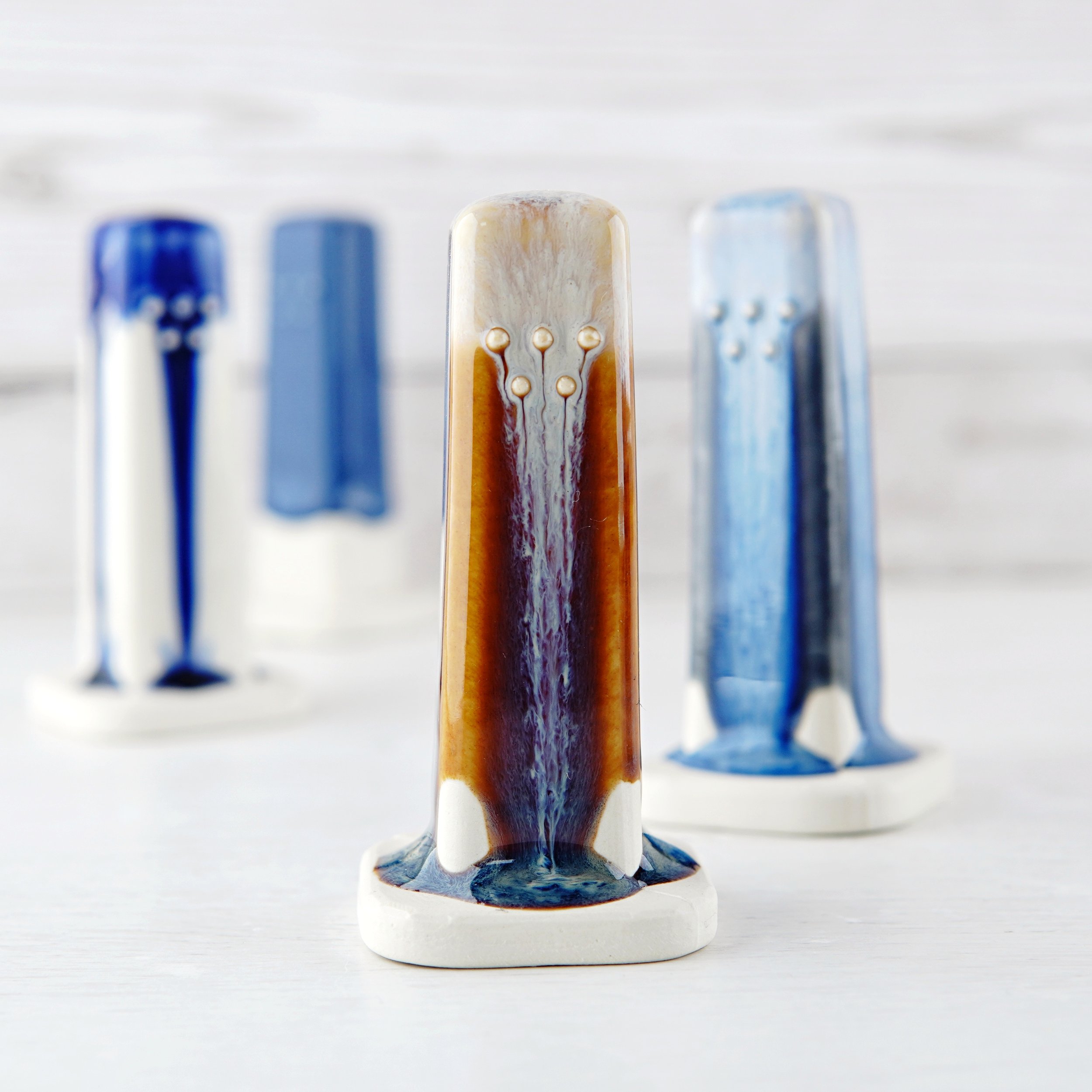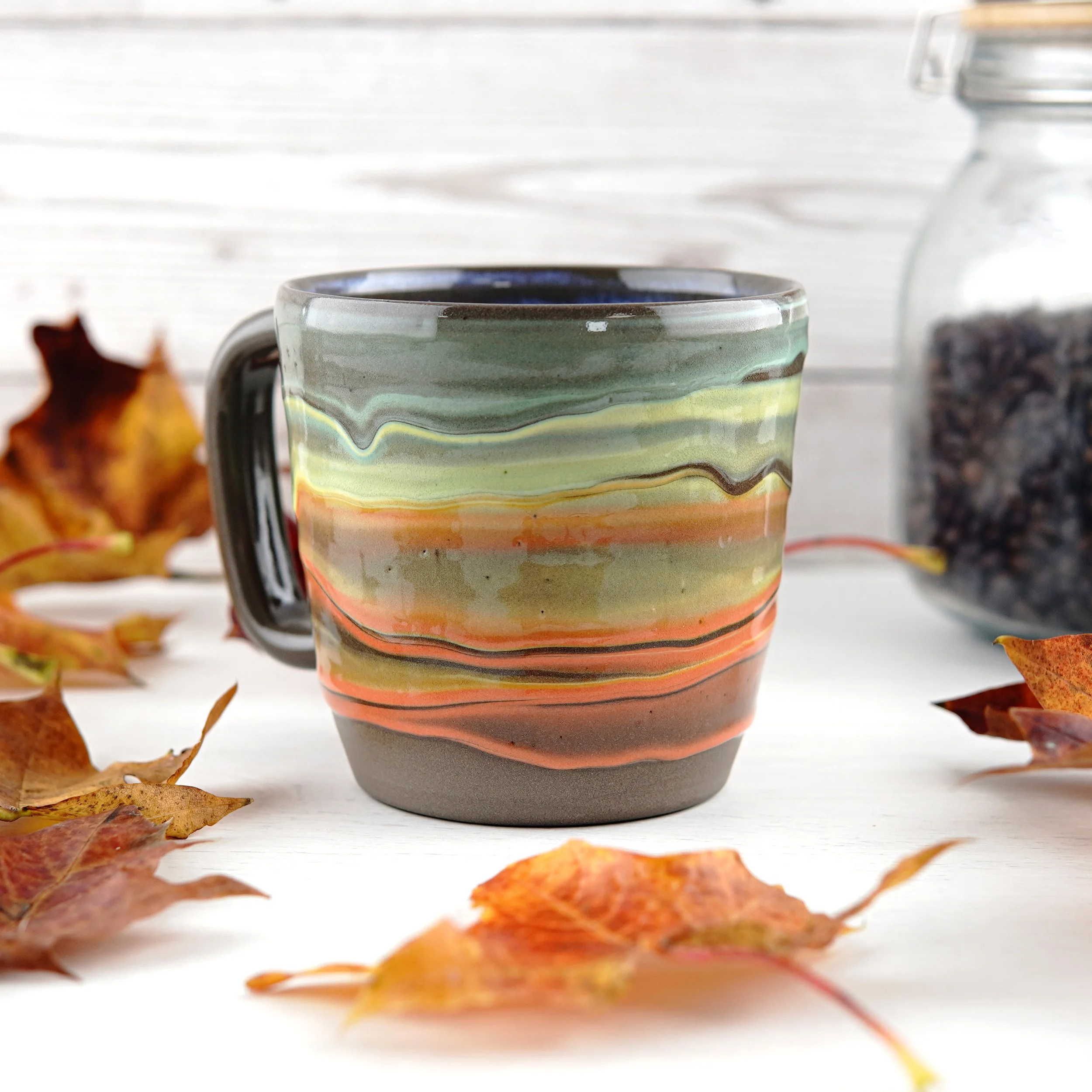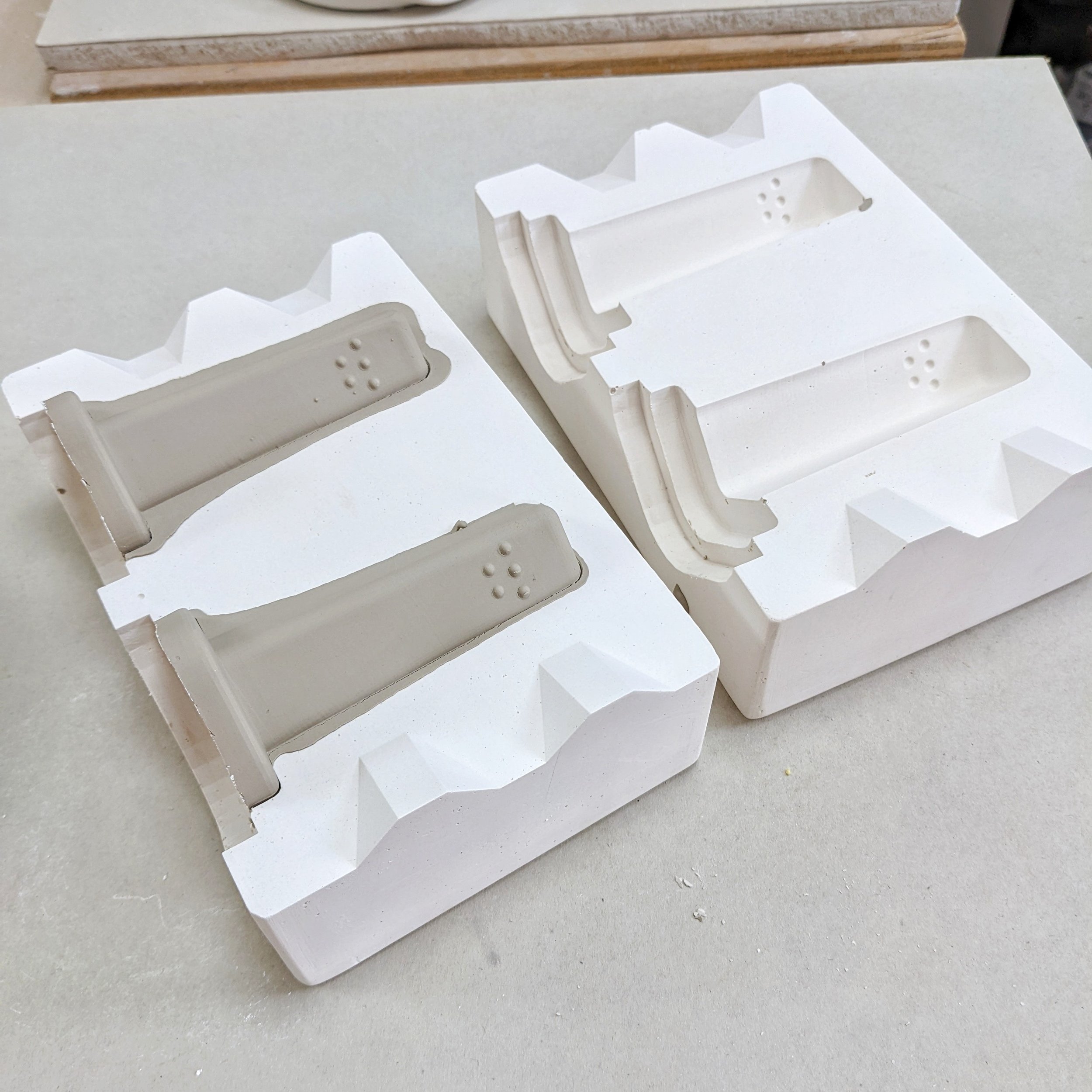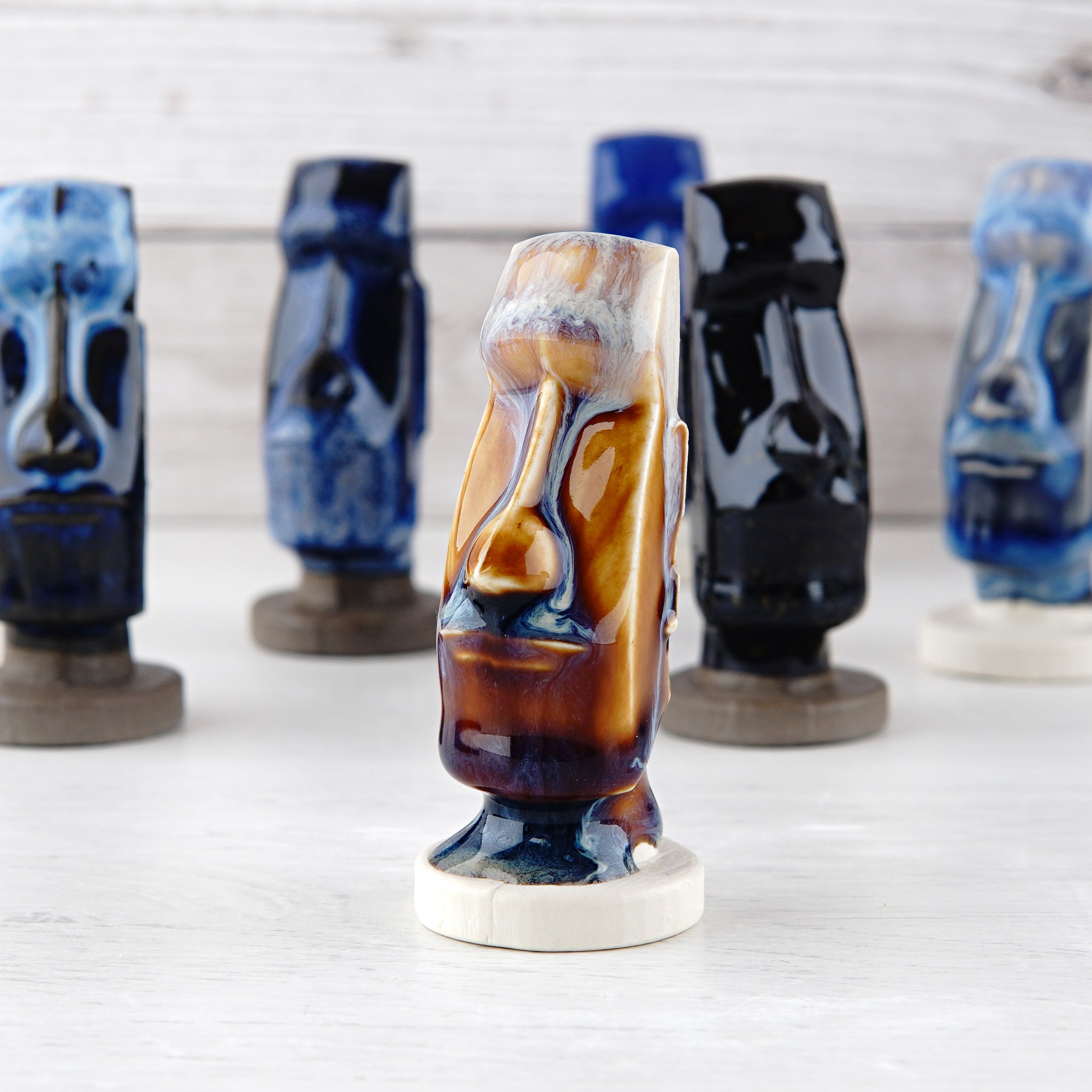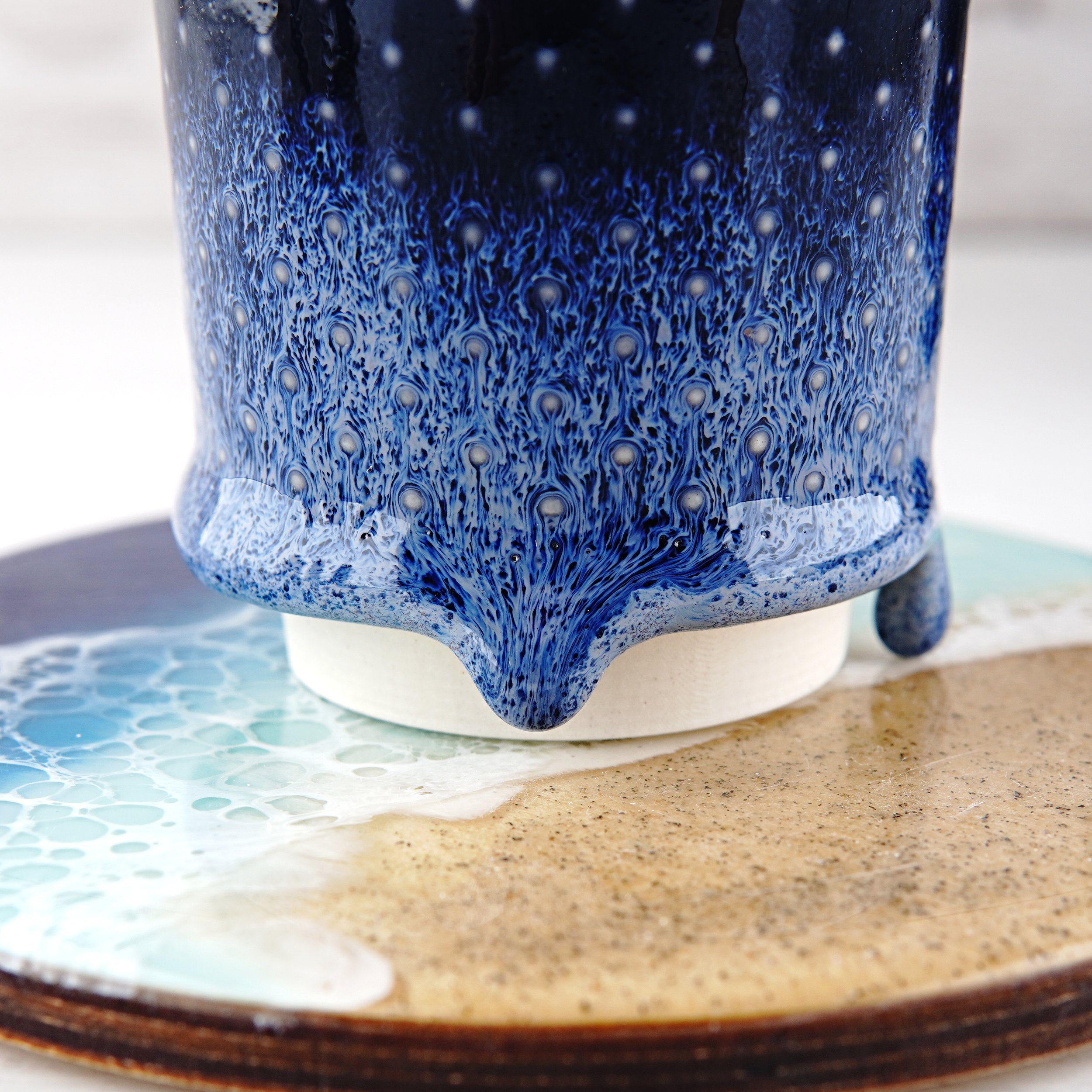Ceramic Myths
I asked on Instagram for the most common myths in ceramics. There were a handful of recurring themes in the responses, some of which I feel I can argue a case for and some I’m not sure about.
I’ll post the myth, then I’ll post my thoughts. These shouldn’t be taken as proof though. I’m not Mythbusters!
Myth: Opening the kiln too soon causes crazing
My thoughts: Myth.
Crazing is essentially when a glaze wants to shrink slightly more than the clay body it’s fused to. The thermal expansion/contraction properties of both the clay and glaze are dictated by the chemistry (post firing, as what happens at peak temperatures is important too), but by the time the glaze has solidified it’s too late to do anything about a difference in expansion/contraction.
It’s like putting on a tee shirt that’s 3 sizes too small, then saying the reason it tore is that you lifted your arms up. The tee shirt is always going to tear eventually, it’s being stretched to near its breaking point, and the same is true of the glaze. Rapid cooling can speed the crazing up, but if you’ve put an XS glaze on an XXL clay, that tension is there regardless.
Myth: Air bubbles in clay cause explosions
My thoughts: Myth.
This one is quite easy to work through practically and logically. The counterargument to it being air bubbles is that it’s caused by trapped moisture. This means you can test it practically if you want to fill your kiln with shards of exploded bisqueware.
Take two identical balls of clay, make into a hollow and sealed ball and leave the other as a solid (air bubble free) block. If you put them straight into the kiln as wet clay, they’d likely both explode, depending on how thin you made the walls of the hollow piece and how slow the firing started.
If you left them a day or two, the hollow one would be pretty much dry (large surface area, not much distance for moisture to travel through clay) and the solid one would be fairly dry on the outside but with a lot of moisture in the centre.
If you let them dry as full as they can (air has some moisture, plus there is chemically bound moisture that only comes out in the firing, so they’ll never be 100% dry) then put them into a firing, there is still a reasonable chance the solid one would explode if the kiln heated significantly past boiling before the last of the moisture had managed to get through the solid clay. A slower start to the firing would keep both pieces intact.
Why is this?
As water goes from a liquid to a gas it expands. If enough water tries to do this inside a solid mass of clay, it explodes. To avoid this we want less water in the piece and an easier route for it to escape. This means that air bubbles, even if they’re sealed completely within the clay, actually help prevent the clay from exploding. They retain less water and allow much faster transit of the water than solid clay.
Why is the myth so believable?
Unintended large air bubbles are generally found in very thick sections of clay (if your wall is only a few mm thick, it can’t have a large air bubble), and thick sections of clay will be more likely to explode regardless. This might make it seem like the air bubble caused the explosion. In reality, the piece was going to explode regardless.
If you have a thick piece and want it not to explode, make sure there is as much airflow around it as possible in the kiln, and hold at around 100c for as many hours as you can be bothered to before climbing above that point (and still do this slowly). A slow enough firing can save even the thickest pieces. And you can fire totally sealed hollow pieces.
Myth: Cracks are caused by lack of compression
Myth: Cracks are caused by uneven drying
My thoughts: It depends.
There were a lot of comments about clay cracking as it dried, and a fairly even split between each possible cause being a myth. In my experience, both can be true. Some clays are more sensitive than others, and I think a bit of the scepticism comes from that variation. If your clay isn’t prone to s-cracking even with minimal compression, you might not believe it’s necessary until you try the same process on a different clay. The same goes for drying. If your clay/process allows for fairly rapid drying without issue, you might not believe it’s that important.
Myth: The Lemon Test is a good way to tell if glazes are durable
My thoughts: Myth.
To fail the lemon test (leaving a glaze in contact with something acidic like a slice of lemon overnight to see if it changes colour) requires a very weak but also strongly coloured glaze. A clear glaze won’t fail the test visually, and the visual change will still be hard to notice with a weakly coloured glaze. So failing the test means a glaze is weak, but passing it doesn’t mean that a glaze is strong.
In my opinion it’s better to learn the chemistry fundamentals to make sure you’re not using anything too far from a chemically stable/neutral glaze, then you can be reasonably confident in the glaze. Then use a piece with that glaze as your daily mug for a month, ideally putting it through a dishwasher as that’s more damaging than handwashing, and see if it changes at all. If it doesn’t (and it shouldn’t) then you can be far more confident in the glaze durability
Myth: You need expensive equipment
My thoughts: Myth
Certain processes need certain pieces of equipment, but at every stage it’s possible to keep costs relatively low by buying used equipment and being frugal. My first equipment was old and worth very little and they worked well enough to get started.
There are many processes that don’t require much equipment at all, just time and skill.
Ceramics will never be one of the cheapest and most accessible artforms, as the firing process adds a level of complexity and cost, but it doesn’t have to be expensive either.
Myth: Glaze making is complicated and difficult
Myth: Glaze making is essential
My thoughts: Myth
I’ve grouped these together because I see them as opposite sides of the same idea. Glaze making is easy (literally just weighing out a few ingredients and adding water) but requires the materials and somewhere to store them, takes time and effort, and makes mess. There are perfectly good reasons to make your own glazes and to just buy commercial ones, and neither is more correct than the other.
Myth: You should dip for 3 seconds
My thoughts: It depends
The dip time needed is a combination of a few factors. The porosity of the clay, the thickness of the glaze, and the desired application. In general, I’ve found that aiming for a three second dip generally means the factors are within sensible limits, so as a goal it’s a fairly good one, but it won’t necessarily be true for all glazes. You need to learn what works for you, your clays, and your glazes. It might be a different dip time for every single combination, and that’s ok.
Myth: You need to score and slip to attach pieces
My thoughts: It depends
It depends on the level of dryness. If you have two bits of freshly thrown clay, they’ll stick to each other perfectly well without any scoring or added slip. If you have two nearly dry pieces of clay, scoring and slipping might not be enough to join them.
So in some situations you can avoid one or both parts of the scoring and slipping, but in others they may be essential.
Also worth noting that the pressure and the movement of the two pieces is significant in determining the joint strength, if you can squash two pieces of clay together and wiggle them until they move as one solid lump you’ll have a much stronger join than if you just rest them together gently. This is arguably more important than the scoring.
Myth: Clay has a memory
My thoughts: True
I think it’s sometimes overstated, but the idea behind this is that the clay will ‘remember’ the shapes it was before the firing and warp back towards them during the firing. If you accidentally distort a piece when it’s soft and bring it back to the correct shape, there’s a very real possibility that it’ll end up somewhere between the two shapes when fired.
Clay is an unusual material, and in part that’s due to the physical shape of the clay particles and the way they interact with each other. This gives it the properties that make it so useful, but also gives it quirks like s-cracks and ‘memory’. But as with all clay weirdness, different clays will behave in different ways. A grogged stoneware will probably forget quite quickly, whereas a porcelain might hold a grudge forever. So there will be disagreement over the truth of this one too.
Myth: Plaster in clay causes explosions
My thoughts: INSUFFICIENT DATA FOR MEANINGFUL ANSWER
I jest, but I included this one because it was suggested to me by two professional slipcasters who didn’t believe it. I’ve not experienced it personally, and if it’s not something they consider to even be true then I’m going to assume it’s an uncommon issue at best. I can imagine large chunks of just about anything buried within a clay wall could cause issues in the firing, but that seems more like a clay/slip preparation issue than a plaster one.
Myth: Potters need to be strong
My thoughts: Myth
Strength is always useful when paired with the correct technique, but it can also compensate for poor technique and make it harder to improve without relearning the basics. This is true for most things I’ve experienced that have both a strength and technique component (powerlifting, climbing, etc). A beginner with a lot of strength can make great progress at the start, far more than someone smaller and weaker, but they rely on the strength rather than making efficient use of their body. A weaker person will be forced to develop better technique to achieve the same result.
Pottery is very much the same. You don’t need to be strong if you have good technique. It’s better to have good technique than use strength to compensate for bad technique, but better still to have both.
Myth: It’s a glamorous life
My thoughts: HAHAHAHA
No, it’s not glamorous. However you decide to make ceramics, you spend a large portion of your time covered in something messy while hunched over. Some people choose to do this in a more glamorous setting, in more glamorous clothes, but the reality is that the majority of the work isn’t glamorous at all.
A large portion of the work isn’t even directly producing a piece. I spend a few hours on each piece in total, and less than half of that will be what people imagine when they picture someone making pottery. There’s around 3 minutes worth of throwing in a mug for example, making it one of the least time consuming parts of the process.
Any I missed?
Add your favourite myths in the comments, or let me know which conclusions you agree/disagree with.
If you like this sort of content and want to support the creation of more, I now have a Patreon specifically for it or a page on my website if you just want to make a single donation.


